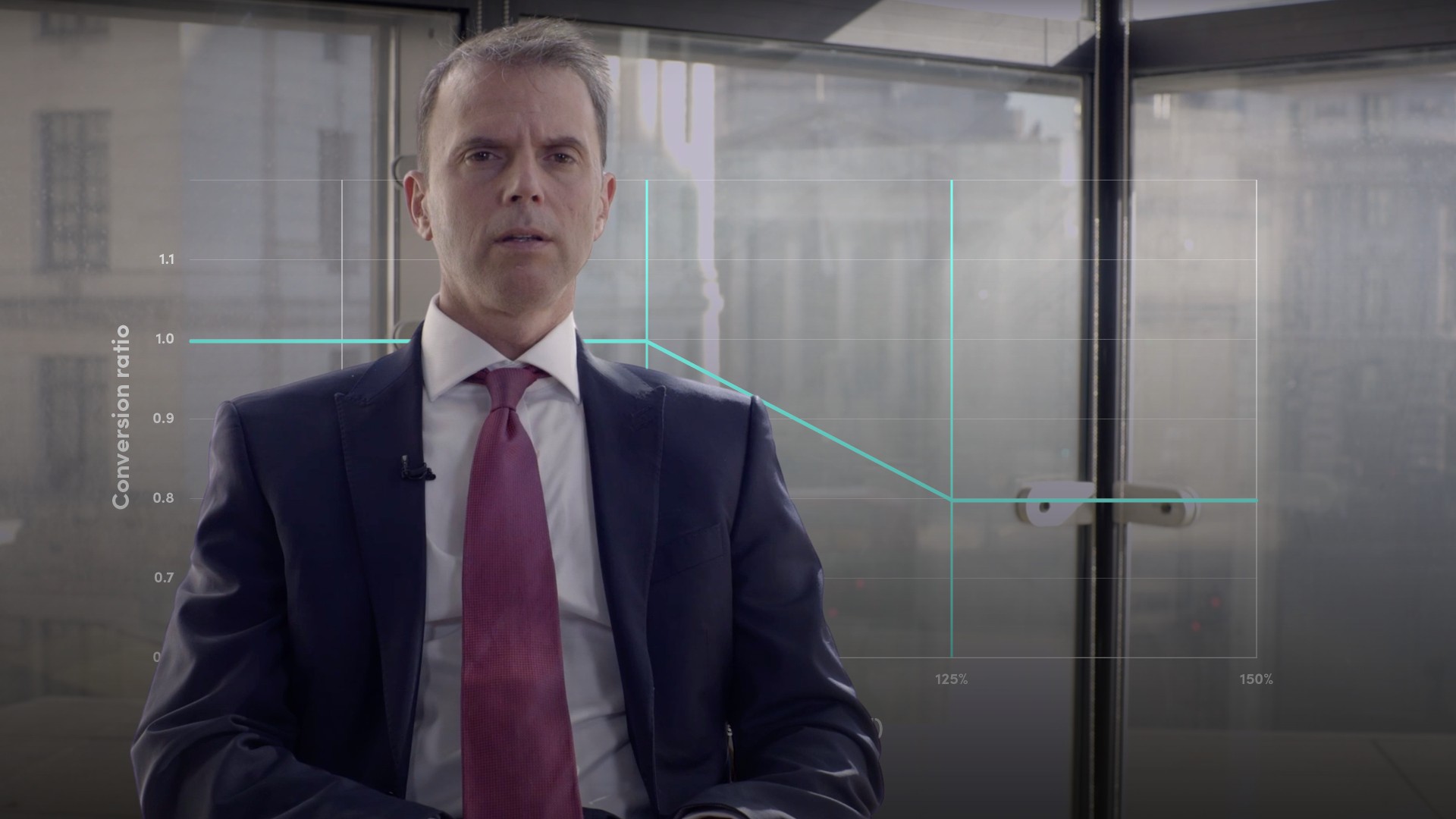
What is a Synthetic Convertible Bond?

James Eves
30 years: Equity capital markets
James speaks on synthetic convertibles and their most common form. He briefly touches on Glencore’s 2018 issuance of $500 million in synthetic convertibles.
James speaks on synthetic convertibles and their most common form. He briefly touches on Glencore’s 2018 issuance of $500 million in synthetic convertibles.
Subscribe to watch
Access this and all of the content on our platform by signing up for a 7-day free trial.

What is a Synthetic Convertible Bond?
2 mins 50 secs
Key learning objectives:
Define a Synthetic Convertible
Describe how an issuer can hedge its exposure using options
Explain why issuers hedge, and give an example of this.
Overview:
An instrument where the issuer has sold a convertible bond in the equity-linked market and bought a matching call option from one or more banks. The result is, the issuer is left with a simple profile of straight debt.
Subscribe to watch
Access this and all of the content on our platform by signing up for a 7-day free trial.
How can an issuer hedge its exposure?
The issuer can purchase an option from the bank that matches exactly any upside performance from the shares that it owes investors at maturity or upon ‘conversion’. Investors receive the cash value of shares and at the same time, the issuer then receives a matching amount from the banks from the purchased call option.
However, by doing this, the issuer gets back straight debt.
Why does the issuer do this?
The reason is lower cost.
There are occasions when the issuer can sell the option embedded in their convertible at a higher price than it costs them to buy the matching call option from the banks. The result is their cost of debt is lower than in the straight bond markets.
What is an example of this?
In 2018, Glencore issued a $500m hedged convertible. They were estimated to have saved 50-60 basis points compared with straight debt.
Who is attracted to this instrument?
Outright funds – they might get to buy well-rated companies.
Subscribe to watch
Access this and all of the content on our platform by signing up for a 7-day free trial.

James Eves
There are no available Videos from "James Eves"



























